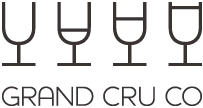Militants continue their Destruction
Militants claiming allegiance to an activist winemaker group in southern France have flooded the streets of a port town in Languedoc after smashing open a merchant's wine vats.
Balaclava-clad wine terrorists attacked the Biron merchant in Sete overnight, local media reported.
They cracked open five vats, sending wine gushing into the nearby streets of the port town. Sete is around 20 minutes by car from Montpellier in Languedoc-Roussillon.
Miliants claimed allegiance to the activist winemaker group CRAV, short for Regional Action Committee of Winemakers and sometimes known just as CAV.
It follows an arson attack on offices owned by the Vinadeis wine group. And it shows that anger over imports of Spanish wine has hit breaking point.
Emergency services arrived on the scene in Sete to contain the spread of wine and stop it from flooding nearby carparks. No one is believed to have been injured.
One CRAV representative told France 3 television in Languedoc, ‘Why did we do it? Because we are never listened to.’
He repeated an oft-cited allegation by the group that some Spanish wine entering France had come from South America. There is no proof.
English wine hits Liv-Ex
Fine wine trading platform Liv-ex has recorded its first trade in English wine as more collectors stray from the norms in the secondary market.
Liv-ex said that a six-bottle case of Nyetimber’s Classic Cuvée 2010 had traded on the exchange on Monday 1 August for £120.
It plays into the rising profile of English wines in general and adds to a trend for wines from less heralded parts of the world gaining a foothold in the fine wine market.
But, it remains early days for English wine and the Nyetimber wine purchased on Liv-ex is still available at several retailers.
In the UK, Berry Bros & Rudd this week stocked it for a retail price £26.95 per bottle, Waitrose Cellar was selling it for £31.99 and Majestic was selling the same wine for the equivalent of £36.99.
In 2010, Bordeaux accounted for more than 95% of trading on Liv-ex.
But that figure has now fallen below 75% as a number of regions have grown in significance: most notably, Burgundy, Champagne, Italy and the Rhône.
‘Although these groups represent the majority of activity, wines from around the world regularly trade on the exchange,’ said Liv-ex. ‘This year, the fine wine market has seen activity from New Zealand, Lebanon and Chile, among others.’
Other regions that have traded on Liv-ex this year include: the US, Australia, Spain, Port, the South of France, Alsace, Germany, the Loire, Cognac, Argentina and South Africa.
Earlier this year, Stephen Skelton MW, a renowned English wine industry consultant and regional chair for the UK at the Decanter World Wine Awards, said many English sparkling wines were still undervalued compared to their Champagne equivalents.
Money going into English wine has so far been directed at producers, rather than the wines themselves.
A Change in Rioja
Many Rioja producers are becoming frustrated with the lack of awareness of quality structure in the region, and feel confined by the awareness of barrel ageing terms as an indication of quality above all else. Javier Galarreta, President, Founder and CEO of Areax, has submitted new proposals to the Consejo in an attempt to clearly define Rioja quality.
Crianza, reserva and gran reserva are three of the most recognised terms on a label of Rioja. These represent minimal barrel ageing requirements, but for many consumers the ultimate quality of the wine. This is a bugbear for many of Rioja’s top wineries, especially if they wish to create terroir driven wines with less use of oak that will trump many Gran Reserva’s in quality. Their wine-lovering consumers will only see Rioja Crianza.
Javier Galarreta, President, Founder and CEO of Areax, has submitted new proposals to the Consejo in an attempt to clearly define Rioja quality.
Galaretta’s ideas are a hybrid of new world labelling and Burgundian classification. They centralise around awareness of the “sub-zones” of Rioja Alavesa, Alta, Baja – terms already in use on labels, and then two further layers of “municipality” then “vineyard”. All bound by ‘age of vines, location of winery, limits on and rules for yields in vineyard and winemaking age of barrels’.




